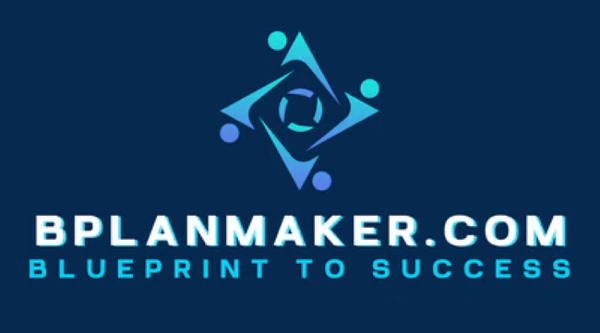
Recording Studio Business Plan Playbook (2025 Guide)
Share
If you can turn raw takes into goosebumps, you can turn them into revenue. This guide walks you through the exact plan lenders respect—and artists trust—to launch or expand a profitable recording studio. You’ll get startup costs, pricing logic, service mix, capacity planning, and a simple KPI model you can copy. When you’re ready, plug your details into a lender-ready plan and export to PDF in minutes.
Quick Answer
A fundable recording studio plan shows: (1) clear service mix (tracking, mixing, mastering, podcasting, rehearsal), (2) realistic utilization (booked hours ÷ available hours), (3) defensible pricing, (4) soundproofing & gear capex with useful lives, (5) cash buffer for slow seasons, and (6) a 3-year forecast with conservative ramp. Use an SBA-style outline and attach quotes for build-out, acoustic treatment, and DAW hardware. Then export a clean PDF for banks/investors.
In this guide
- Market reality & positioning for 2025
- Services that scale: tracking, mixing, mastering, podcasting, rehearsal
- Startup costs & build-out: acoustic treatment, isolation, DAW, backline
- Pricing & packages that convert
- Staffing, scheduling, and utilization math
- Marketing that actually books sessions
- Financial model: break-even & 3-year forecast
- What lenders want to see (and what to avoid)
1) Market Reality & Positioning
Studios win on three things: specialization (genre, podcasting, post-production), experience (producer/engineer roster & portfolio), and throughput (sessions per week). Your plan should pick a lane—e.g., indie vocals & mix-ready beats, live band multitrack, voiceover & podcast, or post for film/games—then stack services around that niche. Keep your first-year goals narrow: one hero room dialed to perfection books better than two so-so rooms.
2) Services That Scale (and Upsell Naturally)
- Tracking (hourly/block): vocal booth + live room; tier by engineer.
- Mixing/Mastering: flat rates with revision limits, rush add-on.
- Podcasting/Voiceover: per-episode capture + edit bundles.
- Rehearsal: off-peak monetization, monthly memberships.
- Extras: session musicians, beat licensing, vocal tuning, stems.
Bundle for outcomes: “Demo-to-Master,” “Podcast Launch 4-Pack,” or “Mix & Master.” Productized packages convert better than open-ended hourly quotes.
3) Startup Costs & Build-Out
Budget in three layers:
- Space & Treatment: isolation (doors, windows), bass traps, diffusion, floating floors, electrical, HVAC noise control.
- Signal Chain: mics, preamps, converters, monitors, headphones, cue system, patchbay, DI boxes.
- DAW & Backline: computer, DAW license, key plugins, control surface; optional drums, amps, keys for live tracking.
Use quotes and useful-life assumptions (e.g., 3–5 years for computers, 7–10 years for acoustic treatment) to defend depreciation in your forecast. Keep capex tight—invest first in the chain that affects your niche (e.g., vocal chain vs. multi-room networking).
4) Pricing & Packages
Anchor your prices to target hourly contribution margin, not competing flyers. Use three tiers: Room-only, Engineer-assisted, and Producer-led. Offer blocks (3/5/8 hours), a day rate, and off-peak discounts to smooth utilization. Publish scope on revisions and turn-times to avoid scope creep.
5) Staffing, Scheduling & Utilization
Utilization = booked hours ÷ available hours. Model 35–45% for Year 1, 50–60% for Year 2, 60–70% for Year 3 in your plan. Build a roster: lead engineer, assistant(s), editors for podcast turnarounds. Shift admin (intake, file delivery, invoicing) to off-peak hours to preserve prime tracking time.
6) Marketing That Actually Books Sessions
- Proof over promos: 30-second before/after reels; clip real sessions (with permission).
- Local saturation: music schools, open mics, rehearsal spaces, venues, wedding DJs.
- Search intent: “recording studio near me,” “vocal booth studio [city],” “podcast studio [city].” Create city pages with genuine portfolio wins.
- Packages page: outcomes, timelines, revision policy, add-ons.
7) The Simple Financial Model (Copy This)
Inputs: Avg. hourly rate, hours available, utilization %, add-on attach rate, engineer payroll, rent, utilities/insurance, plugin renewals, marketing, debt service. Forecast 36 months with a conservative ramp and show cash on hand post build-out.
Back-of-napkin break-even: Fixed Costs ÷ (Avg. Hourly Rate – Variable Cost per Hour). Improve either price or utilization to cross break-even sooner; avoid racing to the bottom on rates.
8) What Lenders & Investors Expect
- Bank-style outline (Executive Summary → Market → Operations → Management → Financials).
- Use-of-funds with quotes; conservative assumptions; cash cushion for 3 months of fixed costs.
- Capacity math (rooms × hours × utilization) tied to bookings, not wishful thinking.
- Clear owner experience and roster; sample SOWs and revision policy.
Ready to Launch Your Recording Studio?
Get the lender-ready plan (Word/PDF) with a built-in 3-year forecast. Edit in minutes, export to PDF, and pitch with confidence.
Buy Now — Recording Studio PlanRelated Templates People Also Buy
Helpful Reads for Your Plan
- Essential Steps in Creating a Business Plan
- Crafting a Powerful Content Marketing Strategy
- Crafting the Perfect Marketing Strategy for Your New Business
Recording Studio FAQ
What’s the fastest way to write a recording studio business plan?
How much does it cost to start?
What services are most profitable?
How do I price?



